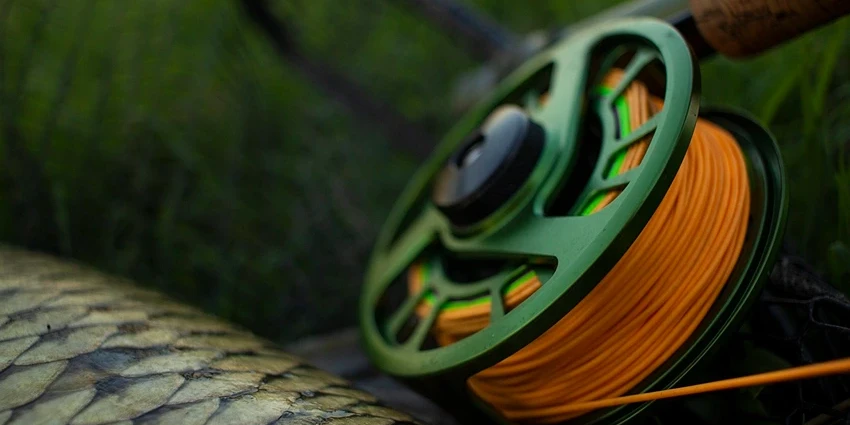All products were chosen independently by our editorial team. This review contains affiliate links and we may receive a commission for purchases made. Please read our affiliates FAQ page to find out more.
Jump to:
Can You Eat Bass?
Yes, bass is safe to eat and is a popular choice in many cuisines. It provides a good source of lean protein and essential nutrients. Proper cooking methods, such as grilling, baking, or pan-searing, enhance its flavor. It’s important to adhere to fishing regulations and guidelines to sustainably enjoy bass.
Key Takeaways
- Nutritional Value: Bass is a healthy and nutritious choice, rich in essential nutrients.
- Selecting the Best Bass: Smaller, younger bass offer a milder flavor and lower mercury content.
- Water Quality’s Influence: The taste and safety of bass significantly depend on the water environment.
- Seasonal Considerations: Certain times of the year are optimal for catching tastier bass.
- Cleaning and Preparing Bass: Proper methods for cleaning and filleting ensure the best culinary experience.
Bass, a name that resonates with anglers and gourmands alike, is more than just a popular catch. It’s a culinary delight that brings together the joys of fishing and the pleasures of a well-prepared meal. In this Fresh Catch Daily exploration, we delve into the world of bass as an edible fish, unraveling its nutritional values, ideal consumption sizes, and the influence of water quality on its flavor. Whether you’re a seasoned angler or a curious cook, this guide offers insights into selecting, preparing, and enjoying bass to its fullest.
Introduction to Eating Bass
Bass, a diverse group of species, presents a range of culinary possibilities. From the well-known largemouth and smallmouth varieties to the lesser-known rock and white bass, each offers a unique taste and texture. This exploration into the edibility of bass aims to clarify misconceptions and provide valuable information for both anglers and cooks.
The Nutritional Value of Bass
Bass stands out not only for its taste but also for its nutritional benefits. Packed with protein, omega-3 fatty acids, and various vitamins and minerals, bass is a wholesome addition to any diet. It’s a heart-healthy choice that supports overall well-being.
Nutritional Facts Table
| Nutrient | Value per 100g |
| Protein | 20g |
| Fat | 5g |
| Omega-3 | 1g |
| Calories | 130 |
Selecting the Best Bass for Consumption
When it comes to eating bass, size and age matter. Smaller, younger bass are preferable for their delicate, mild flavor and lower mercury content. Larger, older bass may accumulate higher levels of mercury and other contaminants, and their meat can develop a muddier, less palatable flavor.
Ideal Bass Size and Age
- Largemouth and Smallmouth Bass: Optimal size is about 12-14 inches or 1.5-4 pounds.
- Younger Bass: Offer more delicate and mild fillets.
- Older Bass: Higher mercury content and stronger flavor.
Importance of Water Quality in Bass Flavor

The environment in which bass are caught plays a crucial role in their taste and safety. Bass from clean, unpolluted waters tend to have a more pleasant flavor, while those from murky or polluted waters can taste unpleasant and may even pose health risks.
Water Quality Impact Table
| Water Condition | Impact on Bass Taste |
| Clean, Clear Water | Pleasant, mild taste |
| Murky, Polluted Water | Strong, unpleasant taste |
Seasonal Considerations for Catching Bass
Seasonality significantly influences the flavor of bass. The pre-spawning period, when water temperatures reach the high fifties, is an ideal time to catch bass. During this time, their feeding habits change, often resulting in a better-tasting fish.
Best Times to Catch Bass
- Pre-Spawning Period: Late winter for the southern US to late spring for the northern US.
- Water Temperature: High fifties Fahrenheit.
Cleaning and Preparing Bass
Properly cleaning and preparing bass is key to ensuring a delectable meal. The process involves scaling, gutting, and filleting the fish with care to preserve the quality of the meat. Here’s a step-by-step guide:
Instructions for Cleaning Bass
- Scaling: Use a scaler or the back of a knife to remove scales, starting from tail to head.
- Gutting: Make an incision under the head, extend it to the belly, and remove internal organs.
- Filleting: Start behind the fins and gills, slicing towards the backbone, then downwards to the belly, separating the fillet from the bones.
Bass Filleting Table
| Step | Description |
| Scaling | Remove scales, working from tail to head. |
| Gutting | Cut under head, extend to belly, remove organs. |
| Filleting | Slice behind fins, along backbone, separate fillet. |
Proper handling and preparation of bass not only ensures a more appetizing meal but also plays a role in the overall safety of the fish consumed. It’s essential to understand the basic techniques of cleaning and filleting to fully enjoy the culinary potential of bass.
Different Ways to Cook Bass
Bass, versatile in its culinary applications, can be cooked in numerous ways, each method bringing out unique flavors and textures.
Popular Cooking Methods
- Grilling: Ideal for a smoky flavor.
- Pan-Frying: For a crispy, golden exterior.
- Baking: A healthier option that preserves moisture.
Taste Profiles of Different Bass Varieties
Each bass species offers a unique taste experience, influenced by its habitat and diet.
Flavor Comparison Table
| Bass Type | Flavor Profile |
| Largemouth | Firm, fishy, great for hearty dishes. |
| Smallmouth | Delicate, sweet, less fishy. |
| Rock | Flaky, slightly fishier. |
| White | Crisp white meat, subtly fishy. |
Cooking Tips for Delicious Bass Meals
To elevate your bass dishes, consider the following tips:
- Marinating: Enhances flavor and tenderness.
- Seasoning: Simple spices can greatly augment taste.
- Cooking Time: Avoid overcooking to maintain texture.
Creative Bass Recipes
Experiment with these simple yet flavorful bass recipes:
Herbed Grilled Bass: Marinate in lemon juice, olive oil, and herbs, then grill to perfection.
Pan-Fried Bass with Garlic Butter: Sauté in garlic-infused butter for a rich, flavorful dish.
Eating Bass Responsibly: A Conservation Perspective

Conservation is key in sustainable fishing practices. Release larger bass to preserve the breeding population and focus on smaller, younger fish for consumption. This approach not only provides better-tasting bass but also contributes to the health of bass populations in the wild.
Register for our latest in-depth reviews and product round-ups from the experts
Enter your email address below to receive our twice monthly reviews emails.
By entering your details, you are agreeing to our terms and conditions and privacy policy. You can unsubscribe at any time.
FAQs: Addressing Common Queries About Eating Bass
Yes, in moderation, and ensuring the fish comes from clean waters to minimize mercury exposure.
While possible, it’s rare and requires the fish to be extremely fresh and free from parasites. Always ensure the bass is from clean, unpolluted water.
Keep filleted bass in a refrigerator for up to 72 hours or freeze immediately for longer storage. Always ensure the fish is properly cleaned before storing.
Martin Cochran, renowned for his expertise in deep-sea fishing and marine wildlife, plays a pivotal role at Fresh Catch Daily. His adventures across various oceans have equipped him with unique insights and techniques, enriching our platform with diverse and engaging content for fishing enthusiasts.









